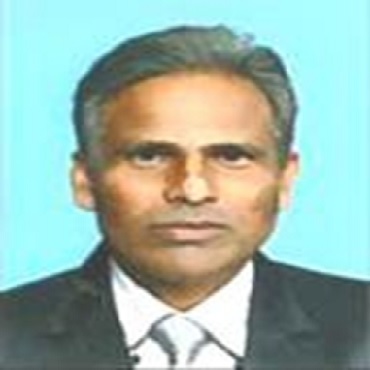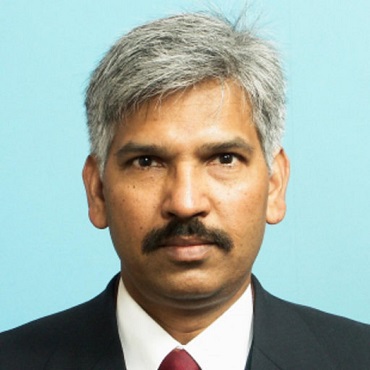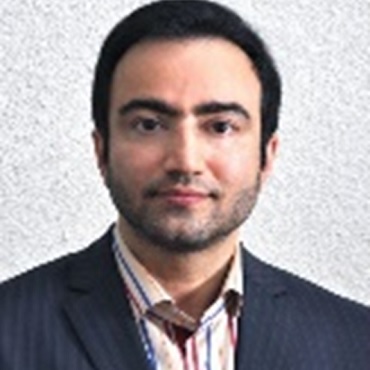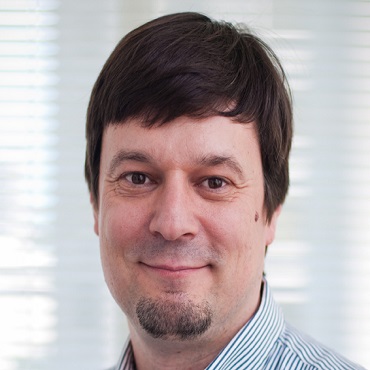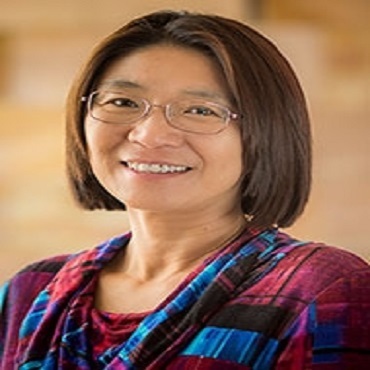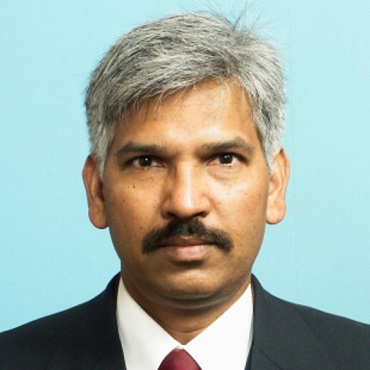Scientific Program
Keynote Session:
Title: Development of the laser-induced water bubble actuator
Biography:
Shigeru Omori completed the Masters course from Graduate School of Electrical Engineering, Shibaura Institute of Technology in 1982. He joined Matsushita Denki Sangyo (c.k.a. Panasonic) in the same year. He was engaged in research and development of cathode ray tube and wavelength conversion device. He joined TERUMO Corporation in 1993. He was engaged in research and development of 3D television, micromachines, medical laser, and surgical manipulator at its R&D Center. He was a professor at Department of Medical Science, Faculty of Medical Science, Teikyo Heisei University in 2015. Presently, he is engaged in the development of medical laser and its application study. He is a Doctor of Medicine.
Abstract:
Title: The epigenetic transgenerational effect of maternal diet on offspring brain development in an animal model of perinatal asphyxia
Biography:
Arsene Cosmin has his expertise in research and molecular diagnostics. He is also a member of Epigenetics and Metabolomics Association, researcher at The Research Institute of the University of Bucharest (ICUB), scientific consultant at Genetic Center Romania, and one of the few fellows in Romania advocating the importance of epigenetics in his country. Recently he was selected as an Expert-Evaluator (Genetics, Epigenetics) in H2020 at the European Commission, Research Executive Agency (REA).
Abstract:
Statement of the Problem: Hypoxic-ischemic encephalopathy (HIE) secondary to perinatal asphyxia (PA) affects especially vulnerable brain areas such as hippocampus and is a leading cause of neonatal morbidity. During pregnancy, high-fat diet (HFD) can induce developmental changes that might enhance the risk of peripartum complications including HIE secondary to PA. Trans-resveratrol (tRESV), is a polyphenol with antioxidant properties that can be used as a maternal dietary supplement in PA. The aim of this study was to identify new epigenetic mechanisms of brain inflammation and injury related to PA, to explore the benefit of tRESV enriched maternal diet and the potential negative impact of the HFD.
Methodology & Theoretical Orientation: The hippocampal interleukin 1 beta (IL-1b), tumor necrosis factor alpha (TNFα) and S-100B protein, were assessed in postnatal day 6 rats exposed to asphyxia, the offspring of female Wistar rats expose to an enriched diet of high-fat or tRESV. The expression of non-coding microRNAs miR124, miR132, miR134, miR146 and miR15a as epigenetic markers of hippocampus response to PA was determined 24 hours post-asphyxia.
Findings: Neural response to PA could be epigenetically controlled. Maternal HFD additionally increases hippocampal TNFα, IL-1b, and S-100B after PA. PA associated with maternal HFD induces miR124 up regulation and miR132 down regulation relative to PA only. tRESV reduces asphyxia-related neuroinflammation and neural injury and down-regulates miR132 and miR15a.
Conclusion & Significance: This data supports the neuroprotective quality of tRESV when used as a supplement in the maternal diet on the offspring’s outcome in PA.HFD increases the PA-induced neuroinflammation and neuronal injury, and epigenetically influences homeostatic synaptic plasticity and neuronal tolerance to asphyxia.
Title: Divergence controlled ultrasonic transmitter array for 3-dimensional long range imaging system in air
Biography:
Dr. Sahdev Kumar has his expertise in evaluation and passion in improving the ultrasonic range sensing. The developed high power ultrasonic transmitter based on novel array elements generates ultrasonic beam to enhance its sensing range up to more than 25 m. He has designed and built this novel ultrasonic array transmitter after twenty years of experience in research and development in Indian Air Force including Aichi Institute of Technology, Toyota, Japan under the guidance of Professor (Dr) Hideo Furuhashi.
Abstract:
Ultrasonic sensing techniques are widely used in the various scientific ultrasonic instruments using sophisticated software for various non-destructive industrial and medical applications, owing to its propagation in all kinds of medium including solids, liquids and gases except vacuum. There are many applications using ultrasonic sound in air, such as distance measurement and range imaging etc. at low cost. However, the main disadvantage is its short measurable range due to the large absorption of the ultrasonic sound in air. Another disadvantage is its bigger size. It consists of an array receiver and due to the large inter-element spacing, grating lobes appears that creates ghost images of the object. Therefore, it was the main difficulty to make it a practical product. However, because of a recent progress of Micro Electro Mechanical Systems (MEMS) technologies, it became possible to make a very small microphone array with many elements in a very small area. To extend the measurable range, some approaches were reported such as; high power sound source using spark discharge, using large scale transmitter elements and improving the signal to noise ratio (SNR) through pulse compression technique etc. In this paper, I have proposed a usage of high power ultrasonic phased array transmitter and ultrasonic array receiver using MEMS microphones for a long-range ultrasonic imaging system. The characteristics of the transmitter on the number of elements, modulated pulse width, etc. are investigated theoretically as well as experimentally. An ultrasonic array transmitter consisting of 144 (12 × 12) elements is constructed. It is controlled by four FPGAs and approximately 30 dB higher sound pressure level has been obtained than that of the single transmitter. The positions of the object are measured by delay-and-sum operations on the reflected received signal. The performance of the imaging system is compared with the system using a single transmitter. The improved 3D measurement field of an object by controlling the divergence of the ultrasonic transmitting array to improve the view angle of the system is shown. In isotropic divergence controlled system, the applied divergence is equal in both; x and y planes. In some applications a wide horizontal and narrow vertical measuring field is required. Therefore, I proposed an anisotropic divergence control system in which horizontal and the vertical divergence angles can be controlled independently. I described the principle of the anisotropic divergence control of the PAT and confirm it by numerical simulations. The anisotropic divergence of the transmitter was successfully controlled. Although, the sound pressure when the divergence was controlled 20o × 5o was about 6 dB lower than that of the PAT in phase and, 10 dB higher than the isotropic divergence controlled system and 26 dB higher than the single transmitter. The measurable range of the system with anisotropic divergence control has been improved over the isotropic divergence control by >2 m. The developed system can accurately detect the object while locating it at different positions. The maximum measurable range is > 25 m without any divergence. The developed system is useful in natural interferences e.g., smoke, fog, darkness etc. to make it a unique and novel ultrasonic long range imaging and the measurement system.
Title: High power terahertz radiation emitter and terahertz imaging technology
Biography:
Dr. Brahm Pal Singh completed his Ph.D. in Quantum Electronics in 1990 from IIT Delhi, and D.Eng. in Quantum Engineering in 1996 from Nagoya University with Postdoctoral Studies at NPL New Delhi, India and AIST Tsukuba, Japan. Dr. Singh is a Research & Development Manager in Advanced Technologies Development Center, ES Company, Panasonic Corporation. He has published over 30 research papers in reputed journals and international conferences/symposiums and has been serving as a referee for the international reputed journals.
Abstract:
Terahertz (THz) radiations lie in electromagnetic spectrum gap between the infra-red and the microwave frequencies from 0.10 THz to 30 THz. In last few decades, generation and detection of THz radiations has attracted considerable interest not only in technological applications for THz imaging but also as a tool to investigate fundamental properties of materials by using time domain THz spectroscopy. Other applications too include information technology, biomedical sciences, non-destructive evaluation, security, quality control of foods beverage and medicines, environment monitoring and ultrafast computing etc. Much effort has been made to increase the generated terahertz radiation power. Among various methods, generation of THz radiation with the biased photoconductive switch (PCS), play very important role owing to its simple configuration and power controllability by bias and geometrical scaling. The low temperature (LT) grown GaAs PCS is most commonly used due to its sub picosecond lifetime and high mobility. Though, the THz generation efficiency is limited by its low breakdown field of about 5 x 105 V/cm. Thus, wide band gap materials with high breakdown electric fields are attractive for high power THz radiation, e.g., GaN with breakdown voltage 3.3 x 106 V/cm having high saturation velocity 2.5 x 107 V/cm and high thermal conductivity 1.3 W/cm K. Thus we investigate the most straight forward electromagnetic radiation from a GaN based large aperture LA-PCS. A carbon doped epitaxial layer was used for active region to realize high resistivity to stand high bias voltage.
THz pulses of 93.3 pJ/pulse energy was estimated at 500 V bias on excitation with 120 fs laser pulses of 266 nm wavelength with device structure as shown in fig.1. Figure 2 depicts the experimental setup with typical THz pulses and THz spectrum generated by LA GaN-PCS and measured with TDS detection.
Title: Determination of the critical growth rate and growth temperature for group-III elements segregation using two exchanges kinetic model
Biography:
Vahid R. Yazdanpanah has more than 17 years industry and academic experience with III-V material growth and fabrication. His Ph.D. is in MicroElectronics-Photonics from UARK, USA. Then for few years he was working on optoelectronic devices in Center for Quantum Devices in Northwestern University, USA. Then, for about 10 year, he was working in Agilent Technologies, focusing on developing many novel manufacturing semiconductor devices such as GaAs and InP HBT and HEMT. He received the Agilent Tech High Frequency Tech Center award in 2010 for the best innovation.
Abstract:
High-performance optoelectronic devices such as lasers, light emitting diodes (LED), solar cells, and detectors can be fabricated based on the complex quantum structures of III-V semiconductors. Quantum structures such as quantum wells (QW), quantum dots (QD), and superlattices can be grown with high quality using molecular beam epitaxy (MBE). However, the interface composition abruptness is a challenge due to the surface atom intermixing. The composition asymmetry in the quantum structures leads to the non-abrupt electronic band alignments that changes the optoelectronic device properties.
For the growth temperature below 600oC, atomic arrangement in the crystal is determined by surface or near-surface processes and atoms cannot rearrange after burial. However, due to the surface mobility, atoms can displace on the growing surface. The increase of the surface mobility leads to the reduction of the growth defects; however, it may cause the so-called “surface segregation” that is the exchange between the sub-layer atoms with the impinging atoms on the growing surface. Surface segregation of atoms is driven by the differences in their binding and elastic energies. Several experimental and theoretical studies indicate that the group III atoms with weaker bond strength segregate to the surface, and therefore, it is expected to see more segregation for In atoms in comparison with Ga Atoms for similar growth conditions. Experimental results on the well known InGaAs/GaAs system show an Indium surface enrichment due to In segregation. A similar behavior has been observed for In atoms surface segregation in InGaAs QDs embedded in GaP matrix.
We studied the concentration profile of the group-III atoms for different growth parameters using the two exchanges kinetic model and determined the critical growth temperature and growth rate regions for the growth of structures with less than 10% segregation of group-III atoms. For instance, Figure 1 illustrates the growth rate and the growth temperature regions for InAs/GaAs and GaAs/AlAs heterostructures, in which the segregation rate is less than 10%. The kinetic model results also imply that the growth temperature threshold for segregation of Ga-atoms at the normal interface into the next AlAs layer occurs at higher temperature in comparison with the In-atoms segregation into the adjacent GaAs layer
Oral Session 1:
- Mechatronics | Optomechatronics | Electrical Engineering | Robotics: New Approaches in Automation

Chair
Brahm Pal Singh
R&D Manager, Panasonic Corporation, Japan
Title: Adaptive control for high speed on/off valve to preserve dynamic performance
Biography:
Qi Zhong received the B.S. degree in Mechanical Engineering and Automation from Zhejiang University of Technology, Hangzhou, China, in 2010. He is currently working toward the Ph.D. degree in the School of Mechanical Engineering, Zhejiang University, Hangzhou, China. His research interests include digital hydraulic technology and its application in engineering machinery, intelligent control, and mechatronic systems.
Abstract:
High speed on/off valve (HSV) is an essential digital hydraulic component, and has been widely used for pressure and flow control in hydraulic systems, which require faster and more stable dynamic performance of HSVs to improve control preciseness. However, for some special kinds of HSVs, like ball structure and poppet structure valves which can reset by the hydraulic pressure instead of a traditional reset spring, their dynamic performance is greatly affected by the hydraulic pressure. Aiming at this problem, a self-correcting PWM control algorithm based on current feedback (SPWMCF) is proposed to improve and even maintain the HSVs’ original dynamic performance under changing pressures. Using current feedback analysis based on critical switching currents, the operational state of the HSV is estimated, and adaptive logic switching of different duty ratios of power source is also realized to preserve the dynamic performance of HSV under changing supply pressure to the maximum extent. Finally, a ball structure HSV is used as a research object, through numerical and experimental studies, it is demonstrated that the supply pressure has a great influence on the dynamic characteristics of the HSV, and the proposed control algorithm achieves the expected effect that the dynamic characteristics of the HSV is not only greatly improved but adapted to pressure changes, and the variation range of the dynamic performance can be controlled within 7.4% (0.3ms) under 4-20MPa operating conditions. The presented control algorithm is effective and can be applied in HSV-controlled systems to improve the robustness of the target actuator.
Keynote Session:
Title: Stable autosomal monoallelic expression is maintained by multiple mechanisms
Biography:
Alexander “Sasha” Gimelbrant is an Associate Professor of genetics at Harvard Medical School and Dana-Farber Cancer Institute. He has earned his PhD in biochemistry at Moscow State University. After postdoctoral work at the Whitehead Institute and Massachusetts General Hospital, he has started his laboratory at the Dana-Farber Cancer Institute. His lab is interested in the epigenetic mechanisms controlling allele-specific expression in development and disease, and the role of these mechanisms in biological variability.
Abstract:
Widespread autosomal monoallelic expression (MAE) affects thousands of mammalian genes in a manner resembling X-chromosome inactivation (XCI). Similar to XCI, MAE results in an epigenetic mosaic, with clonal cell populations showing highly stable transcriptome-wide patterns of full or partial allelic silencing. In contrast to XCI and genomic imprinting, very little is known about the mechanisms involved in allelic silencing of genes subject to MAE. To identify perturbations that can disrupt silencing during MAE, we have developed a systematic screening approach, Screen-seq ASE. This multi-well screening approach is based on targeted RNA sequencing at dozens of MAE loci. Changes in allele-specific expression (ASE) are assessed using existing polymorphisms in cDNA, obviating the need of introducing extrinsic reporters into the cells. We have previously characterized MAE in monoclonal B-cell lines from mice with a high density of polymorphisms (129xCast F1). For our screen, we assessed changes in ASE for 28 genes in one such cell line in response to a collection of 48 drugs known to affect epigenetic targets. In 3 of 28 genes tested, exposure to the DNA methylation inhibitor 5-aza-deoxycytidine reactivated the silenced alleles. The extent of reactivation is dose and time-dependent. Partial reactivation of the same genes was also observed in response to knock-down of Dnmt1, consistent with the role of DNA methylation in MAE maintenance in some loci. Our multi-locus screening strategy has allowed us to identify, for the first time, a perturbation that reactivated alleles stably silenced due to MAE. For a subset of these genes, the maintenance of allelic silencing depends on the DNA methylation state. Transcription of other genes remained monoallelic, suggesting that MAE maintenance in different loci depends on distinct mechanisms.
Title: A human way of being and optimizing sickness away
Biography:
Jay M Goodbinder is a diplomate of the American Board of Chiropractic Internists and has expertise in functional endocrinology, immunology, biochemistry, physiology, and genetics. He is the best-selling author of a book titled “Defending Your Life.” He has helped thousands of people from around the world overcome chronic illness and get their lives back. He is the owner and lead clinician of the Epigenetics Healing Center and his passion is to continue proving people have the power to reverse their own chronic illness.
Abstract:
Statement of the Problem: Humans have been seen incredible increases in chronic illness. Researchers tend to focus on minimizing symptoms by administering a drug or treatment that they have been paid to research. There is a clear reward for achieving a beneficial result when studying these treatments as the manufacturer that pays for the study, commissions a specific research company and that company (who is being paid by said manufacturer) will be hired again if they get the result the manufacturer was intending. As improving health is the most optimal way to defeat chronic disease, there should clearly be more research done in this field. There is research being done, but it is being done on specific products in order to generate profit and they are still engineering studies with the intent of a positive result. The truth is that humans have also needed certain factors in order to optimize health. There is no special product, chemical or herb from some far off destination that will bring health. Health is who you are and what you do on a daily basis. Whether it is diabetes, thyroid, parkinsons, MS, rheumatoid arthritis, colitis or other chronic diseases, there is always a biochemical process that is an adaptations to stressors placed upon the body. Those stressors can be chemical, biochemical, physiologic, emotional and more. Although the gold standard for research is a double blind placebo study, 1 factor, drug or supplement, will not give miraculous results for chronic illness. It will require a complete transition of eating habits, drinking clean water, having good sleep, stress management and good relationships. The purpose of this presentation is to provide evidence for the ability to remediate chronic disease using lifestyle and natural products as well as removing harmful parts of the person’s lifestyle.
Methodology & Theoretical Orientation: A case study of patient’s who chose to alter their lifestyle to reverse chronic disease and get off medications from beginning to follow up.
Findings: These patients, who worked with the Epigenetics Healing Center and followed dietary, exercise and supplementation protocols according to laboratories, have completely reversed chronic diseases that are said to have no cure.. Conclusion & Significance: Recommendations are made to patients dealing with chronic disease and polypharmacy, to adapt appropriate lifestyle change and supplementation to make them sufficient in all biochemical, physiological, spiritual and emotional factors. This is proven to be effective at reversing chronic disease.
Title: Critical Determinants of Mitotic Bookmarking by the Major Notch Signaling Effector RBPJ
Biography:
Hua-Ying Fan is an Associate Professor in the Program of Cancer Genetics, Epigenetics and Genomics in the University of New Mexico Comprehensive Cancer Center since 2017. She was an Assistant Professor in the Department of Biochemistry and Biophysics and a Core Member of the Epigenetics Program at the University of Pennsylvania Perelman School of Medicine between 2010-2017. She is interested in the field of Epigenetics and her research is currently focused in two main directions: (I) to understand how the unique and overlapping biochemical activates of different ATP-dependent chromatin remodelers are used to shape the epigenetic landscape to allow specific biological processes to ensue, and how defects in these activities can lead to disease, such as cancer, and (II) to unravel epigenetic mechanisms that maintain cell-fate commitment and lineage fidelity through mitosis via Notch Signaling. She received her PhD from New York University, New York, USA, and did her postdoctoral training with Dr. Alan Weiner at Yale University and with Dr. Robert E. Kingston Mass General Hospital/Harvard University. She was a Howard Temin fellow between 2003-2008.
Abstract:
Cell identity maintenance requires the faithful propagation of specific transcription programs through mitosis and transcription factors selectively retained on mitotic chromatin have emerged as critical players for this process, termed mitotic bookmarking factors. We identified RBPJ, the major transcriptional effector of Notch Signaling, as one of the very few sequence-specific transcription factors retained on the mitotic chromatin of mouse embryonal carcinoma F9 cells. ChIP-seq revealed that only 60% of the chromosomal sites occupied by RBPJ in interphase cells are retained in mitotic cells. As with other bookmarking factors, how RBPJ is selectively retained at a subset of its interphase-binding sites during mitosis is entirely unknown. We hypothesized that RBPJ-interacting proteins might contribute to this selective mitotic-chromatin retention. RBPJ is known to interact with the histone deacetylase HDAC1 and histone demethylase KDM5A. ChIP-qPCR demonstrated that HDAC1 and KDM5a associate with RBPJ binding sites in an RBPJ-dependent manner. Intriguingly, HDAC1 knockdown resulted in an increase of RBPJ occupancy in mitotic cells, indicating that HDAC1 negatively regulates RBPJ-mitotic chromatin association. Similar results were found in cells treated with the histone deacetylase inhibitor TSA. Remarkably, we also found increased mitotic KDM5a occupancy at sites of mitotic chromatin that displayed increased RBPJ occupancy in HDAC1 KD or TSA treated cells. Knockdown of KDM5a in TSA-treated cells reversed this effect, indicating that KDM5a positively regulates increased RBPJ-mitotic chromatin association in the context of HDAC1 KD or TSA treatment. To understand further the mechanisms that retain RBPJ on mitotic chromatin, we investigated the status of histone posttranslational modifications. We found that increased RBPJ occupancy is associated with decreased tri-methylation and increased mono-methylation on histone H3 lysine 4. Together, these results uncover a regulatory mechanism that can lead to the selective retention of transcription factors on mitotic chromatin.
Title: High precision automatic mask-wafer aligner using moire sensing technology
Biography:
Dr. Brahm Pal Singh completed his Ph.D. in Quantum Electronics in 1990 from IIT Delhi, and D.Eng. in Quantum Engineering in 1996 from Nagoya University with Postdoctoral Studies at NPL New Delhi, India and AIST Tsukuba, Japan. Dr. Singh is a Research & Development Manager in Advanced Technologies Development Center, ES Company, Panasonic Corporation. He has published over 30 research papers in reputed journals and international conferences/symposiums and has been serving as a referee for the international reputed journals.
Abstract:
With the tremendous increase in complexity of integrated circuits having many multifunctional devices on the same board, rapidly shrink the interconnection line width to sub micro meter dimensions levels. The reduced device size can result in the reduced intrinsic switching time, the reduced power consumption as well as the reduced device cost. The devices dramatic miniaturization depends on novel lithographic processes and a high accuracy in mask-wafer alignment technique. Moiré signal sensing technology can provide ultrahigh alignment accuracy up to less than +/- 50 nm. To achieve high accuracy in mask-wafer alignment, it required initial alignment to be done with the help of microscopes to bring the mask-wafer alignment grating pitch marks within the moiré signal capture range. We have proposed two steps with coarse and fine mask-wafer alignment to make the process automatic without a microscope. When a laser beam is passed through a pair of identical gratings, of say 25 nm pitch, a relative displacement in their position gives a highly periodic signal called “moiré” signal. This moiré signal is suitably amplified, processed and digitalized to find out the maximum and the minimum values of the moiré signal to compute its inverted moiré signal Iinv and their difference error signal Idiff using Iinv = A + B – I and Idiff = Iinv – I = (A + B) – 2I, where A, B, and I are maximum, minimum and instantaneous digital values of the moiré signal. A novel method was developed to align mask and wafer with placement accuracy estimated to be +/- 40 nm to achieve automatic alignment accuracy to be better than +/- 50 nm. Figure 1 and figure 2 show a setup for feasibility experiments with moiré signals and digitalized moiré signals with alignment marks, respectively.



